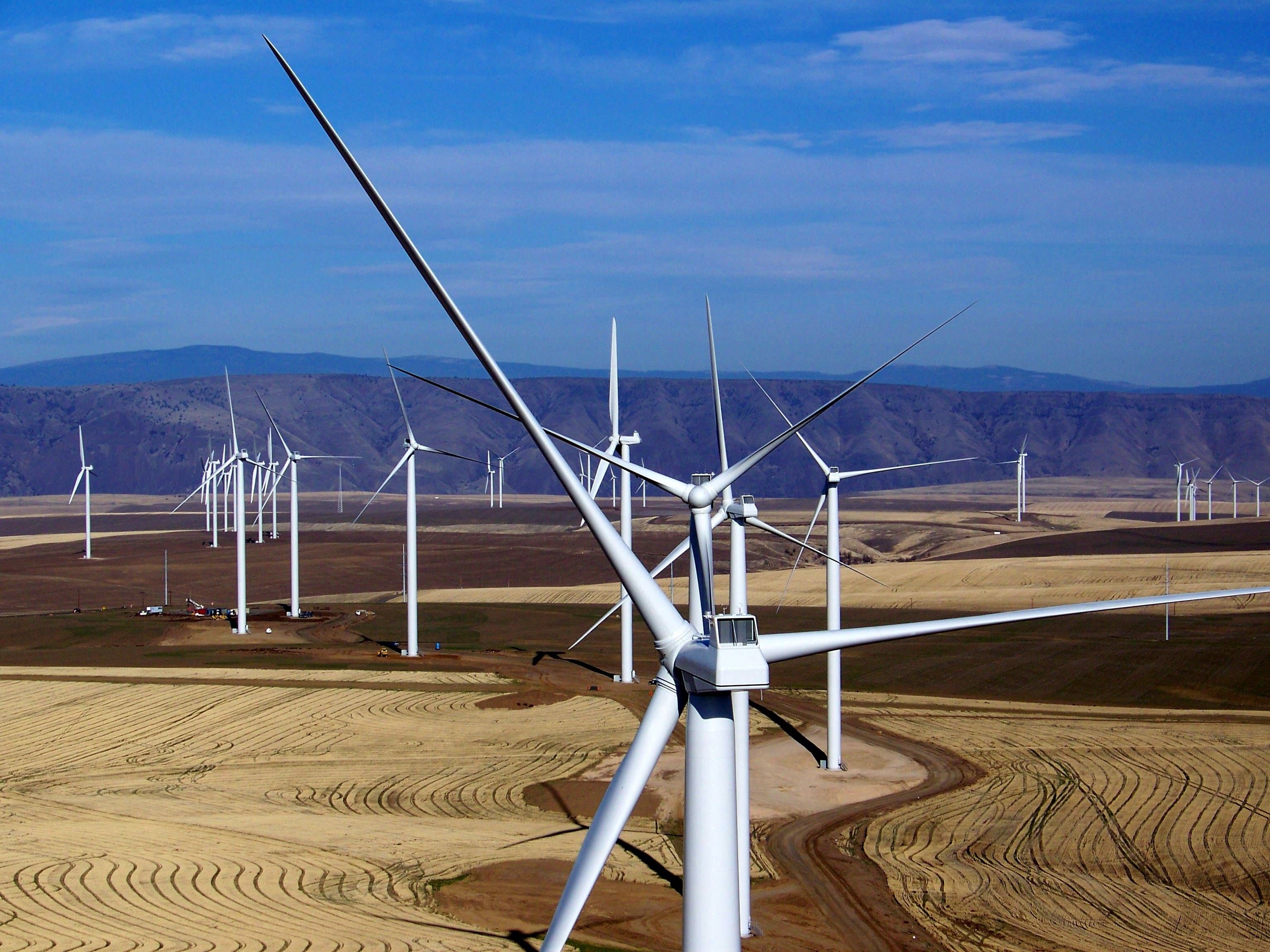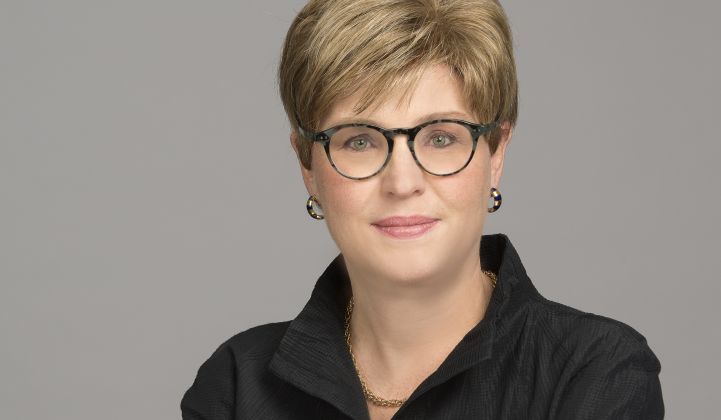If there was ever a time when running a utility was a straightforward, predictable business, those days are gone, as Maria Pope knows only too well.
Since 2018, when Pope became CEO of Portland General Electric (PGE), Oregon’s largest utility, the U.S. has seen social and political upheaval on a scale few would have predicted. For utilities, the unrest comes on top of a technological sea change that was already underway.
The unemployment rate has surged in PGE’s region during the coronavirus pandemic, hobbling commercial demand for power. Presumptive Democratic nominee Joe Biden, who currently leads President Donald Trump in national polls, is calling for a carbon-free power sector by 2035. Meanwhile, PGE’s hometown of Portland has seen months of protests culminating in Trump sending in federal agents.
“We are reminded daily that we are living in historic times for our community and country,” Pope said on PGE’s recent earnings call.
PGE, like every large American electric utility, is still a long way from finding an environmentally sustainable, customer-centric model that can withstand the unpredictable forces shaping the 21st century. The company sources half of its electricity from fossil fuels, including coal power from the Boardman and Colstrip plants in Oregon and Montana.
But Pope didn’t build those plants; she inherited them. And changes are coming.
Later this year Portland General will close the 40-year-old Boardman plant, which it relies on for more than 500 megawatts of power — its single largest generation asset. Instead, in that same county along the Columbia River, PGE and NextEra Energy Resources are building the Wheatridge project — one of the first triple-hybrid renewables projects anywhere in the world, marrying wind, solar and batteries at large scale. PGE is also buying more hydropower in the Pacific Northwest.
“The utility sector has decarbonized its energy supply more than I think most people appreciate,” Pope said in a recent interview. “Overwhelmingly, we are focused on doing even better, and we’re at a very interesting inflection point.”
Pope’s willingness to rethink the utility playbook goes beyond replacing aging fossil plants with lower-cost renewables.
The company recently launched a virtual power plant pilot study to look at aggregating home batteries, a concept only a few American utilities have dabbled with publicly. Meanwhile, PGE is automatically enrolling residents in a demand-response program — a departure from the normal approach — and it recently backed the concept of installing chargers for electric trucks along the I-5, the West Coast’s main north-south highway.

The 450 MW Biglow Canyon wind farm, located along Oregon's Columbia River, is PGE's largest renewable energy asset. (Images: PGE)
COVID-19 will have at least one lasting effect on the utility industry, Pope says: accelerating the transition toward cleaner, more distributed sources of energy.
“We’re really excited about the long-term opportunities, which we think will come at us at a faster pace than they would have if not for the pandemic,” she said on the July earnings call.
PGE embraces "distributed flexibility" on the grid
If running a utility is more complicated than it used to be, so is being a utility customer. Pope spends a lot of time thinking about how to engage with PGE’s 900,000 customers, knowing that progress there will smooth some of the edges off of the decarbonization journey.
In Pope’s first year as CEO, Portland General launched its “Smart Grid Test Bed,” described as integrating smart grid technologies “on a scale never before attempted in the United States.”
Boiled down, it’s a demand-response program for three communities, compensating customers for agreeing to reduce their electricity consumption at crunch times for the grid. That could be as simple as a smart thermostat nudging down an air conditioner, but increasingly it will involve equipment like home batteries and smart EV chargers.
One sign of PGE's success in connecting with customers in new ways is the very high level of participation when the utility asks for help reducing the grid's load. A recent "energy event" called in June saw a 56 percent participation rate among those enrolled in the program, compared to industry norms in the single-digit percentages, Pope says.
Customers are alerted the day before the event by text or email and can decide whether to participate. Some customers are knocking 10 percent off their monthly bills through the program, Pope says.
“What we’ve done is taken three substations, 25,000 customers, in three very different geographic regions: one very high-tech focused, one area with more diversity, one that’s sort of an emerging bedroom community.”
One surprise after nearly two years of testing? “We probably expected to see more differentiation” in uptake among the different communities, she says. “It’s surprised me how many people are really interested — and particularly during this period of pandemic, with so many people at home — in a renewable, clean-energy future.”
People working from home in precarious times are more conscious than ever of the need for reliable power, Pope says. "They’re depending upon utilities and companies like Portland General probably more than at any other time in our 130 years.”
Last month PGE announced it will launch a multiyear virtual power plant trial, linking 500 or so homes with solar and battery systems into a controllable fleet. One of the goals is finding a balance between using such behind-the-meter assets to benefit the grid while ensuring they remain sufficiently valuable to their owners. Finding that sweet spot with distributed flexibility will be one key to the future utility business model.
Such pilot projects remain small today, but they could scale quickly, helping utilities to defer or avoid big infrastructure upgrades. PGE believes its efforts with distributed flexibility could avoid the need for 200 megawatts of conventional generation by 2025.
About those PGE coal plants
Even the most forward-thinking utilities face difficult choices and realities: aging fossil plants with workers reliant on them for jobs; ever-shifting energy policies driven by national politics; and for investor-owned utilities like PGE, impatient shareholders.
Shortly after Pope became CEO, Portland General set a target to reduce its emissions by at least 80 percent by 2050. While more ambitious than many utilities, the day may come when that target starts looking dated compared to the recent net-zero targets set by the likes of Duke Energy and Southern Company.
“[Net zero] is obviously...our goal," Pope said. "We will absolutely [move as] fast as possible. [...] Technologically, we have a lot of work to do.”
The fate of PGE’s last coal plant, not to mention its five natural-gas plants, remains an open question. Two of the four units at the Colstrip Power Plant in eastern Montana were closed earlier this year, but the other two units — in which PGE owns a 20 percent stake, for 296 megawatts of net capacity — are open for business.
PGE’s portion of Colstrip is not scheduled to be fully depreciated until 2030, and based on current Oregon legislation the utility could continue to use the coal power until 2035. But the plant’s long-term economics are questionable — coal generation fell 30 percent across the U.S. in the first half of 2020 — and PGE has said it is weighing its options.
“We’re in ongoing discussions and collaborations around the plant,” Pope tells GTM. “Just as we did in Oregon [at Boardman], we’re working with all parties to make sure we’re able to have transitions that work for everyone — for the state, and for the communities that have worked at, and been part of, these assets for a long time.”
There’s a nugget in PGE’s annual report that hints at a possible post-Colstrip future. It turns out that PGE owns a stake in the Colstrip Transmission Line, which runs from the coal plant across the vast state of Montana before plugging into the Pacific Northwest.
When the Colstrip plant retires, that transmission line will still be there — and open for doing business with new wind and solar farms in Montana.




